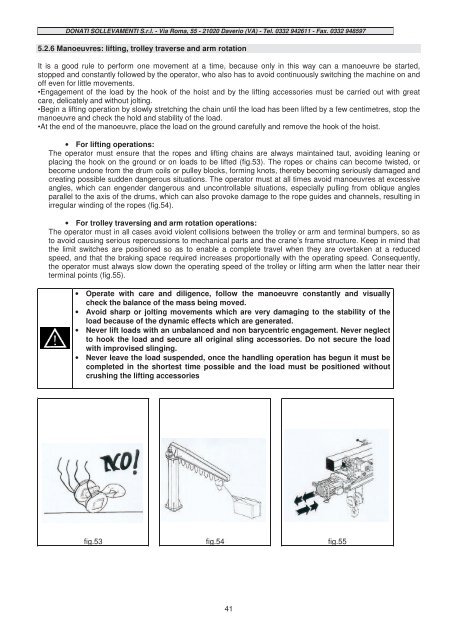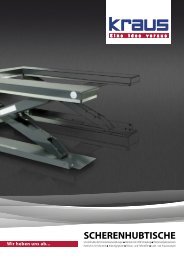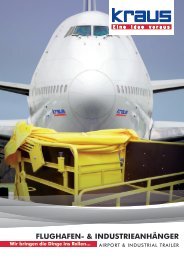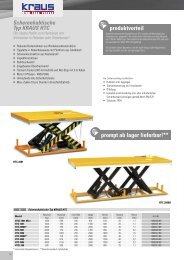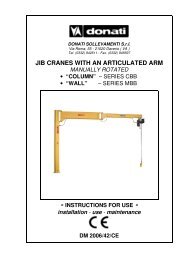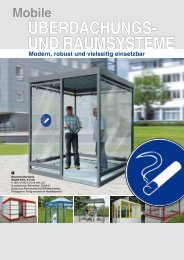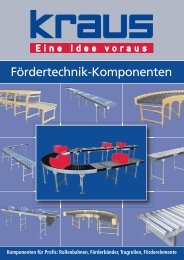COLUMN JIB CRANE - INSTRUCTIONS FOR USE -
COLUMN JIB CRANE - INSTRUCTIONS FOR USE -
COLUMN JIB CRANE - INSTRUCTIONS FOR USE -
You also want an ePaper? Increase the reach of your titles
YUMPU automatically turns print PDFs into web optimized ePapers that Google loves.
DONATI SOLLEVAMENTI S.r.l. - Via Roma, 55 - 21020 Daverio (VA) - Tel. 0332 942611 - Fax. 0332 948597<br />
5.2.6 Manoeuvres: lifting, trolley traverse and arm rotation<br />
It is a good rule to perform one movement at a time, because only in this way can a manoeuvre be started,<br />
stopped and constantly followed by the operator, who also has to avoid continuously switching the machine on and<br />
off even for little movements.<br />
•Engagement of the load by the hook of the hoist and by the lifting accessories must be carried out with great<br />
care, delicately and without jolting.<br />
•Begin a lifting operation by slowly stretching the chain until the load has been lifted by a few centimetres, stop the<br />
manoeuvre and check the hold and stability of the load.<br />
•At the end of the manoeuvre, place the load on the ground carefully and remove the hook of the hoist.<br />
• For lifting operations:<br />
The operator must ensure that the ropes and lifting chains are always maintained taut, avoiding leaning or<br />
placing the hook on the ground or on loads to be lifted (fig.53). The ropes or chains can become twisted, or<br />
become undone from the drum coils or pulley blocks, forming knots, thereby becoming seriously damaged and<br />
creating possible sudden dangerous situations. The operator must at all times avoid manoeuvres at excessive<br />
angles, which can engender dangerous and uncontrollable situations, especially pulling from oblique angles<br />
parallel to the axis of the drums, which can also provoke damage to the rope guides and channels, resulting in<br />
irregular winding of the ropes (fig.54).<br />
• For trolley traversing and arm rotation operations:<br />
The operator must in all cases avoid violent collisions between the trolley or arm and terminal bumpers, so as<br />
to avoid causing serious repercussions to mechanical parts and the crane’s frame structure. Keep in mind that<br />
the limit switches are positioned so as to enable a complete travel when they are overtaken at a reduced<br />
speed, and that the braking space required increases proportionally with the operating speed. Consequently,<br />
the operator must always slow down the operating speed of the trolley or lifting arm when the latter near their<br />
terminal points (fig.55).<br />
• Operate with care and diligence, follow the manoeuvre constantly and visually<br />
check the balance of the mass being moved.<br />
• Avoid sharp or jolting movements which are very damaging to the stability of the<br />
load because of the dynamic effects which are generated.<br />
• Never lift loads with an unbalanced and non barycentric engagement. Never neglect<br />
to hook the load and secure all original sling accessories. Do not secure the load<br />
with improvised slinging.<br />
• Never leave the load suspended, once the handling operation has begun it must be<br />
completed in the shortest time possible and the load must be positioned without<br />
crushing the lifting accessories<br />
fig.53<br />
fig.54<br />
41<br />
fig.55


